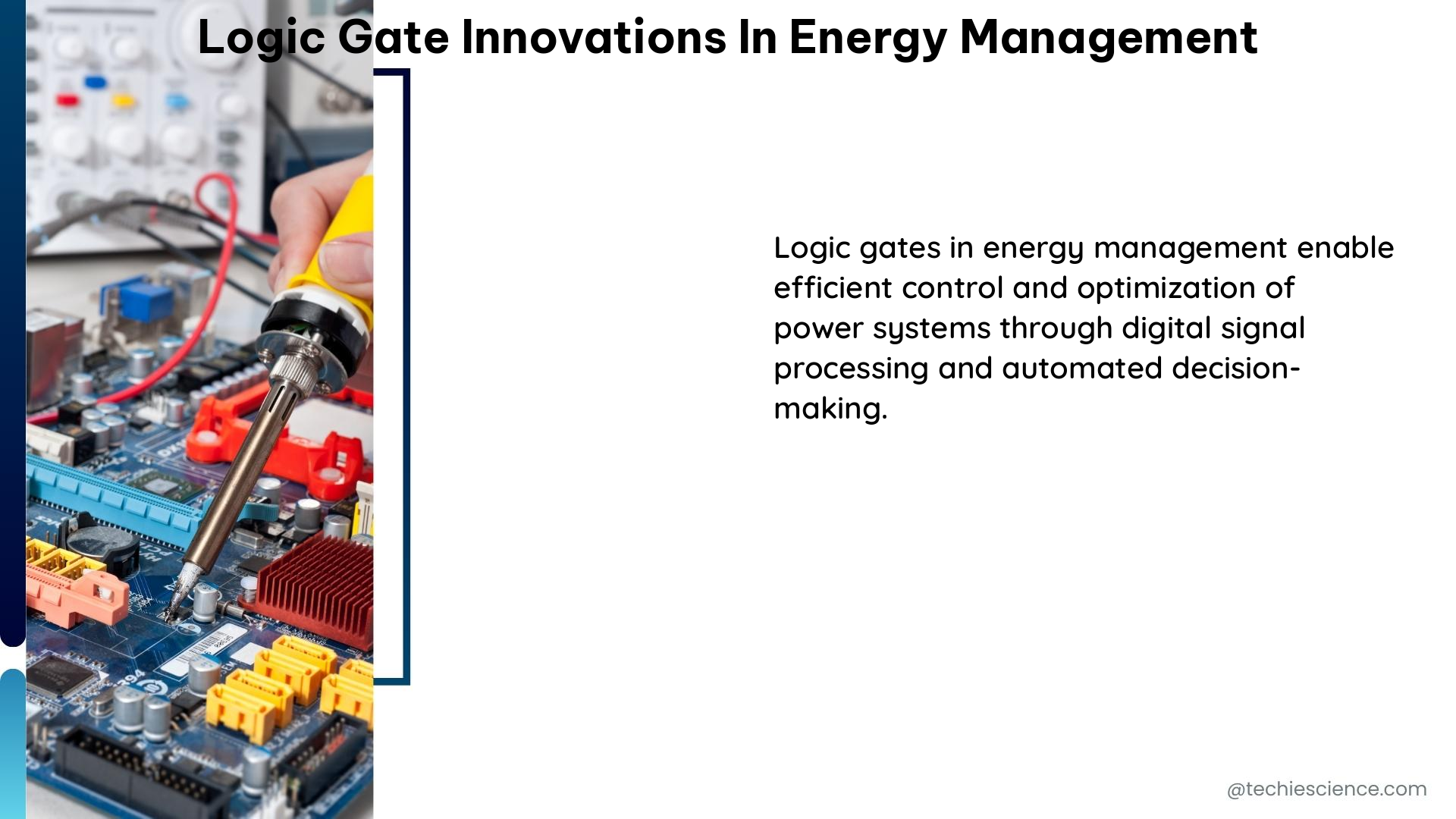In the ever-evolving landscape of energy management, logic gate innovations have emerged as a game-changer, offering organizations a powerful toolkit to optimize their energy consumption, reduce costs, and enhance their environmental performance. From the development of SMART goals to the integration of artificial intelligence (AI) and fuzzy logic, these advancements are transforming the way we approach energy management.
SMART Goals for Energy Management
One of the key logic gate innovations in energy management is the adoption of SMART goals. These goals are Specific, Measurable, Assignable, Realistic, and Time-bound, and they provide a structured framework for organizations to improve their energy management practices.
Specific Energy Management Goals
Specific energy management goals are clear and well-defined, addressing a particular aspect of energy consumption or efficiency. For instance, a specific goal could be to reduce electricity consumption in the main office building by 10% over the next 12 months.
Measurable Energy Management Goals
Measurable energy management goals involve quantifiable metrics that allow organizations to track their progress and evaluate the effectiveness of their efforts. Common energy management metrics include kilowatt-hours (kWh) of electricity consumed, greenhouse gas emissions, and energy intensity (energy consumption per unit of output).
Assignable Energy Management Goals
Assignable energy management goals involve designating ownership and accountability for achieving the desired outcomes. This ensures that specific individuals or teams are responsible for implementing and monitoring the energy management initiatives.
Realistic Energy Management Goals
Realistic energy management goals are ambitious yet achievable, taking into account the organization’s current energy consumption patterns, available resources, and technological capabilities. Setting unrealistic targets can lead to frustration and disengagement, while overly conservative goals may limit the organization’s potential for improvement.
Time-bound Energy Management Goals
Time-bound energy management goals establish a clear timeline for achieving the desired outcomes. This helps organizations to prioritize their efforts, allocate resources effectively, and measure the progress of their energy management initiatives.
Fuzzy Logic in Energy Management

In addition to SMART goals, fuzzy logic-based systems have emerged as a innovative approach to energy management. These systems leverage the principles of fuzzy logic, which allows for the representation and manipulation of imprecise or uncertain information, to optimize energy performance.
Fuzzy Logic-based DC Link Energy Management System
One example of a fuzzy logic-based innovation in energy management is the development of a simple fuzzy logic-based DC link energy management system for hybrid industrial power supply. This system uses a straightforward synthesis and easy-to-use algorithm to improve the performance of energy quality indicators, such as voltage regulation, current harmonics, and power factor.
Improved Energy Quality Indicators
The fuzzy logic-based DC link energy management system has been shown to provide improved performance of energy quality indicators, with values well below their standard thresholds. This translates to more efficient energy utilization, reduced energy losses, and enhanced power quality for industrial applications.
Simple Synthesis and Easy-to-use Algorithm
The key advantage of this fuzzy logic-based system is its simplicity and ease of implementation. The algorithm used in the system is straightforward, making it accessible for a wide range of energy management professionals and industrial operators.
AI in Governance, Risk, and Compliance (GRC) for Energy Management
Another area of logic gate innovation in energy management is the application of artificial intelligence (AI) in governance, risk, and compliance (GRC) activities. AI-powered GRC systems can help organizations to identify, assess, and mitigate energy-related risks more effectively.
AI-powered Cyber Risk Management
One of the most widely used applications of AI for GRC in energy management is Cyber Risk Management. AI algorithms can analyze vast amounts of data, detect anomalies, and identify potential cyber threats to the organization’s energy infrastructure, enabling proactive risk mitigation strategies.
Improved Threat Detection and Response
AI-powered Cyber Risk Management systems can quickly identify and respond to cyber threats, such as malware, phishing attacks, and unauthorized access attempts, helping to protect the organization’s energy management systems and data.
AI-powered Enterprise Risk Management
In addition to Cyber Risk Management, AI is also being leveraged for Enterprise Risk Management in the energy sector. AI algorithms can analyze a wide range of data sources, including market trends, regulatory changes, and operational performance, to help organizations identify and assess energy-related risks more accurately.
Enhanced Risk Identification and Mitigation
By leveraging AI, organizations can gain a more comprehensive understanding of their energy-related risks, enabling them to develop and implement more effective risk mitigation strategies. This can include optimizing energy procurement, enhancing energy efficiency measures, and improving the resilience of their energy infrastructure.
Conclusion
Logic gate innovations in energy management are transforming the way organizations approach energy optimization, risk management, and compliance. From the development of SMART goals to the integration of fuzzy logic and AI, these advancements are empowering organizations to save energy, reduce costs, and improve their environmental performance.
As the energy landscape continues to evolve, the adoption of these logic gate innovations will become increasingly crucial for organizations seeking to stay ahead of the curve and maintain a competitive edge in the market.
References:
- Dexma. (2023-09-18). SMART Goals for Energy Management [Free Template]. Retrieved from https://www.dexma.com/blog-en/smart-goals-for-energy-management/
- LogicGate. (n.d.). LogicGate Resource Center | LogicGate Risk Cloud. Retrieved from https://www.logicgate.com/resource-center/
- Mbende Ernest Titi Muluh Fombu, Andrew Pesdjock, Mathieu Jean Pierre Kenne, Godpromesse Sanjong Dagang, Clotaire Thierry Sonfack, Lionel Leroy. (2023-11-01). A simple fuzzy logic based DC link energy management system for hybrid industrial power supply. Retrieved from https://www.sciencedirect.com/science/article/pii/S2352484723014816

The lambdageeks.com Core SME Team is a group of experienced subject matter experts from diverse scientific and technical fields including Physics, Chemistry, Technology,Electronics & Electrical Engineering, Automotive, Mechanical Engineering. Our team collaborates to create high-quality, well-researched articles on a wide range of science and technology topics for the lambdageeks.com website.
All Our Senior SME are having more than 7 Years of experience in the respective fields . They are either Working Industry Professionals or assocaited With different Universities. Refer Our Authors Page to get to know About our Core SMEs.